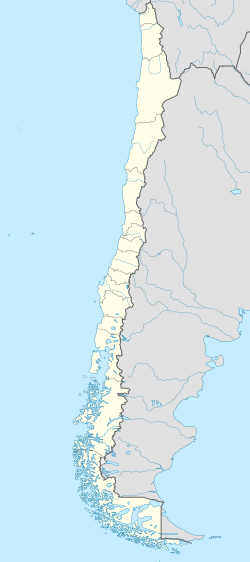San Fernando | |
|---|---|
 San Fernando's central plaza. | |
| Coordinates(city): 34°35′S70°59′W / 34.583°S 70.983°W | |
| Country | |
| Region | |
| Province | |
| Founded | 1742 |
| Founded by | José Antonio Manso de Velasco |
| Government | |
| • Type | Municipality |
| • mayor | Pablo Silva Pérez (Independent) |
| Area | |
• Total | 2,441.3 km2 (942.6 sq mi) |
| Elevation | 89 m (292 ft) |
| Population (2017 Census) [2] | |
• Total | 73,973 |
| • Density | 30/km2 (78/sq mi) |
| Demonym | Sanfernandino/a |
| Sex | |
| • Men | 36,077 |
| • Women | 37,896 |
| Time zone | UTC-4 (CLT [3] ) |
| • Summer (DST) | UTC-3 (CLST [4] ) |
| Postal code | 3070000 |
| Area code | +56 72 |
| Website | Official website (in Spanish) |
San Fernando is the capital of the province of Colchagua, in central Chile, and the second most populated urban center of the O'Higgins Region. Located close to the Tinguiririca River (a tributary of the Rapel) in a fertile valley, San Fernando sits 339 m (1,112 feet) above sea level. Founded in 1742, it became the provincial capital in 1840.





